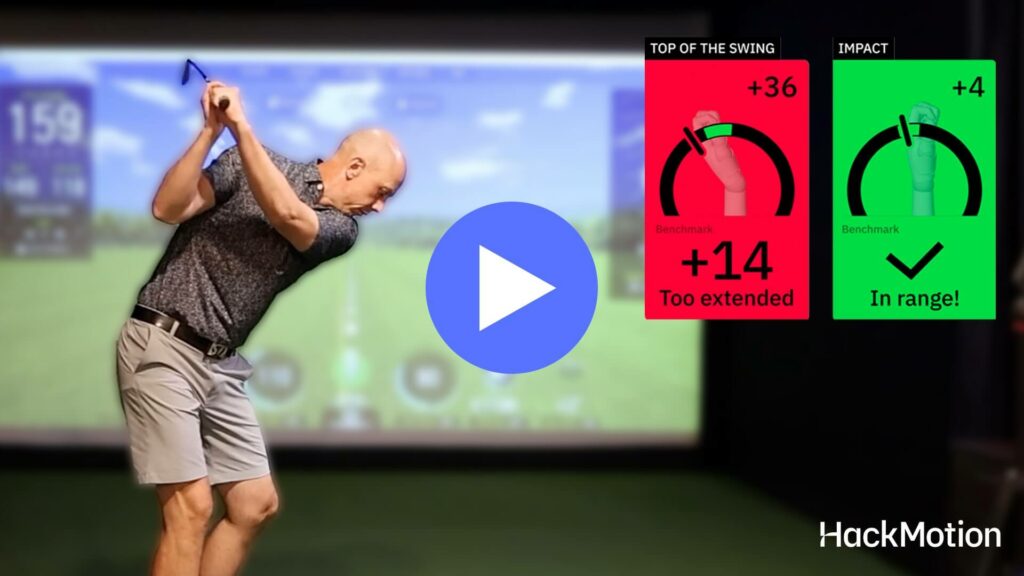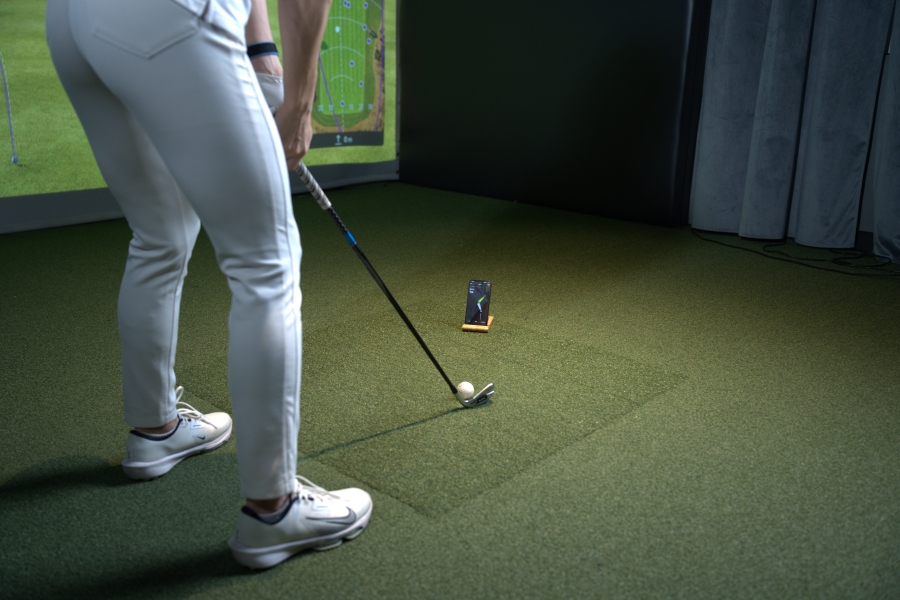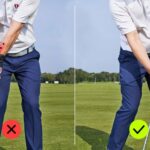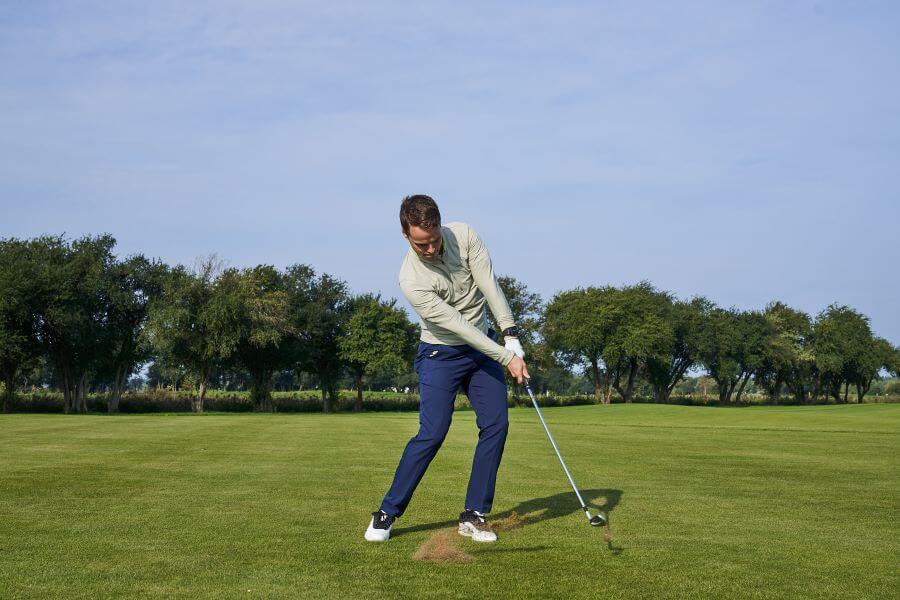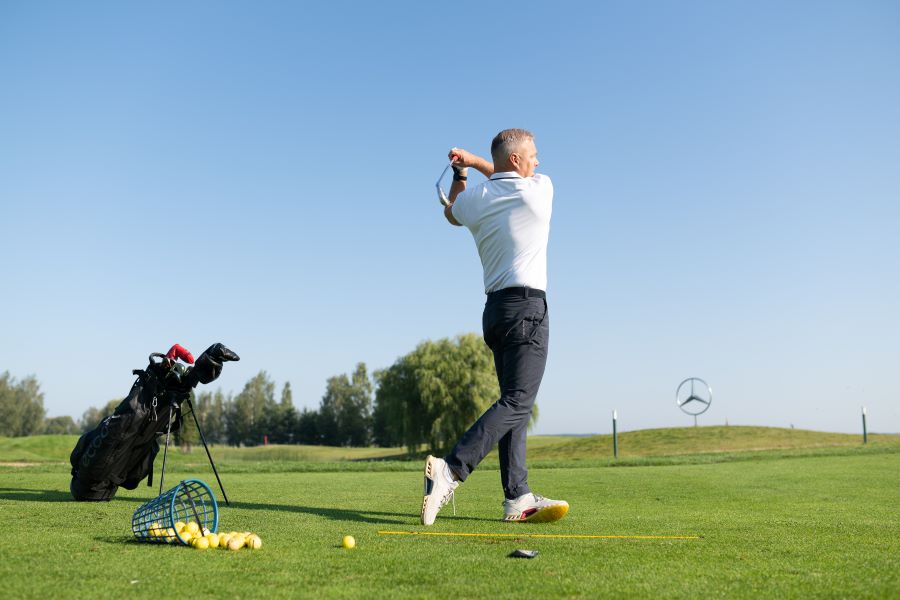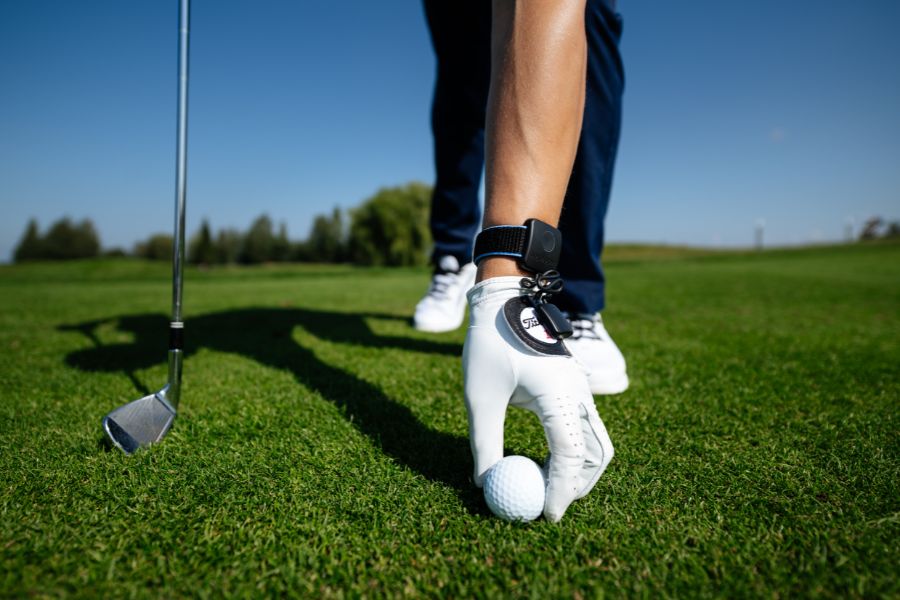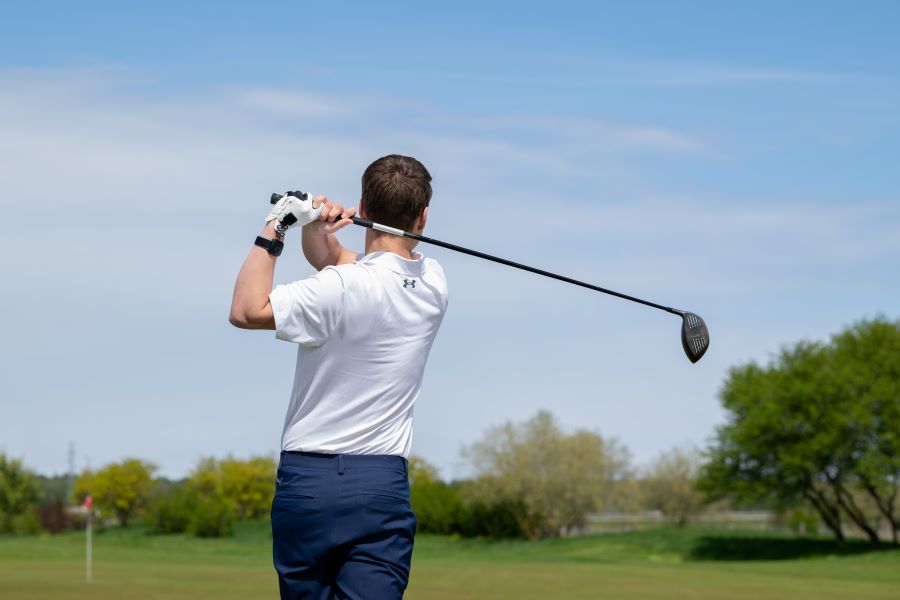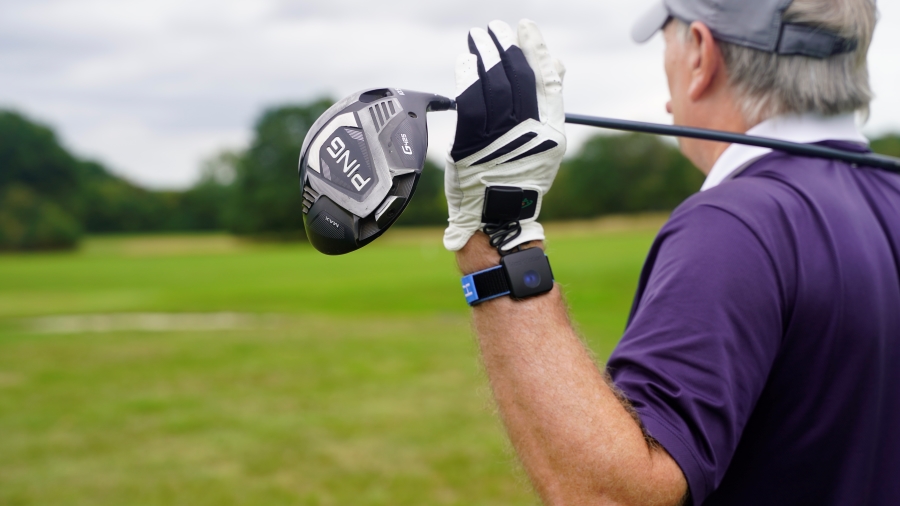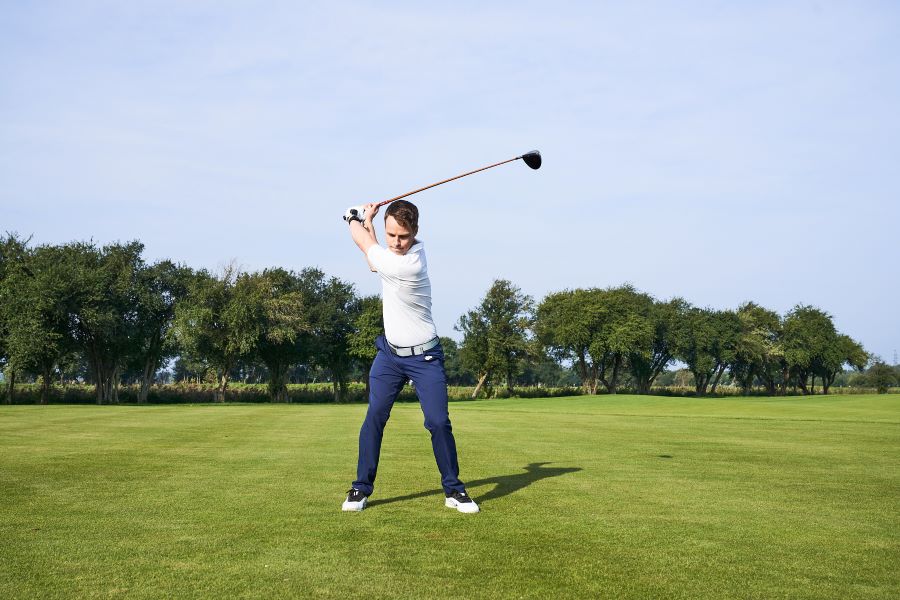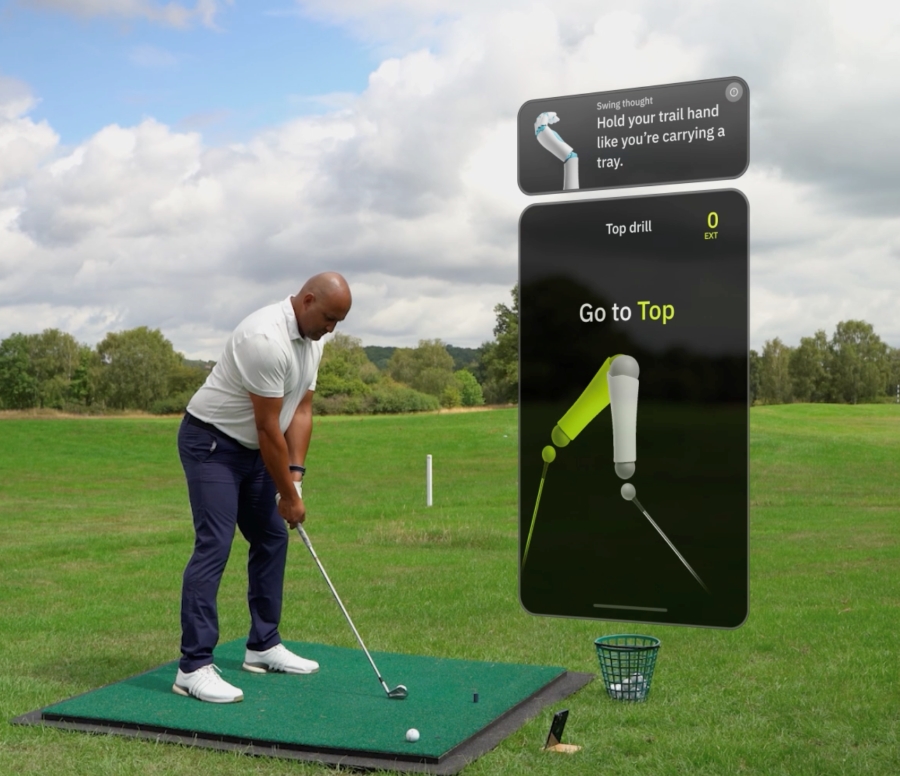Where to Focus Your Eyes When Hitting a Golf Ball? (Answered!)
Where to focus your eyes when hitting a golf ball is not a highly discussed topic among amateur golfers.
In this post, I explain where to look when hitting different golf shots and how visual acuity can set you up for a successful strike.
By the end of this post, you will know where to look when hitting a draw, fade, or straight shot.
Plus, I explain how to set up a greenside bunker to catch enough sand at the bottom of your swing.
Where to Focus Your Eyes During the Golf Swing? (Key Takeaways)
If you can head out to the range right now to work on your swing, here are the key points you can take with you to start working on this concept.
- The position of your eyes at address helps you envision your shot.
- Focus behind the equator for straight golf shots.
- Look at the back right of the ball to prepare for a draw.
- Focus your eyes on the back left of the ball to hit a fade.
- Look at the sand an inch behind the ball for bunker shots.
Contents
Where to Look when Hitting the Golf Ball?
If you insist on focusing on the golf ball at address, I recommend directly behind the ball’s equator for straight shots.
However, golf coach Clay Ballard explains that he, like many golfers, does not focus his eyes on any particular region of the golf ball.
This is due to your clubface position at impact, which determines the flight, not the part of the ball you strike.
Instead, he is playing his shot over in his head, communicating to his muscles to replicate the desired movements.
The reason amateurs find this area important is their discomfort over the top of the ball and their inability to envision their wanted shots.
So, players believe that focusing on the ball will enhance their ability to strike it at the intended point.
| Shot Type | Where to Look | Why It Helps |
|---|---|---|
| Straight Shot | Back of the ball / directly behind equator | Promotes square clubface and neutral swing path |
| Draw | Back-right quadrant of the ball | Encourages inside-to-out path with slightly closed clubface |
| Fade | Back-left quadrant of the ball | Encourages out-to-in path with slightly open clubface |
| Bunker Shot | 1–2 inches behind the ball in the sand | Promotes hitting the sand first and using it to lift the ball |
Where to Focus Your Eyes for Straight Shots?
Professional golf coaches recommend keeping your eyes focused on the back of the ball during your swing for a straight shot.
While it does not guarantee a straight shot, it helps you visualize the path of the clubface through impact and the intended ball flight that follows.
Eyeing this part of the ball makes it easier for the average golfer to picture squaring the clubface at contact and prompting a straight shot.
Where to Look When Hitting a Draw?
To promote a draw, focus your eyes on the back-right quadrant of the golf ball (for a right-handed golfer). This subtle shift in attention helps you visualize an inside-to-out swing path with a slightly closed clubface.
A helpful visual cue is to picture an arrow behind the ball pointing slightly right of your target line. That image encourages your body to deliver the club from the inside and start the ball out to the right, giving it room to curve back toward the target.
By focusing on that specific part of the ball, you’re not just looking, you’re mentally rehearsing the path you want to use to hit a draw.
Where to Look When Hitting a Fade?
To hit a fade, your goal is to start the ball slightly left of your target (for a right-handed golfer) and have it curve back to the right. This requires an out-to-in swing path with a slightly open clubface at impact.
To help visualize this, focus your eyes on the back-left quadrant of the golf ball (which is the outside part of the ball from your stance). This visual cue encourages a swing that cuts across the ball and helps create the spin needed to fade it.
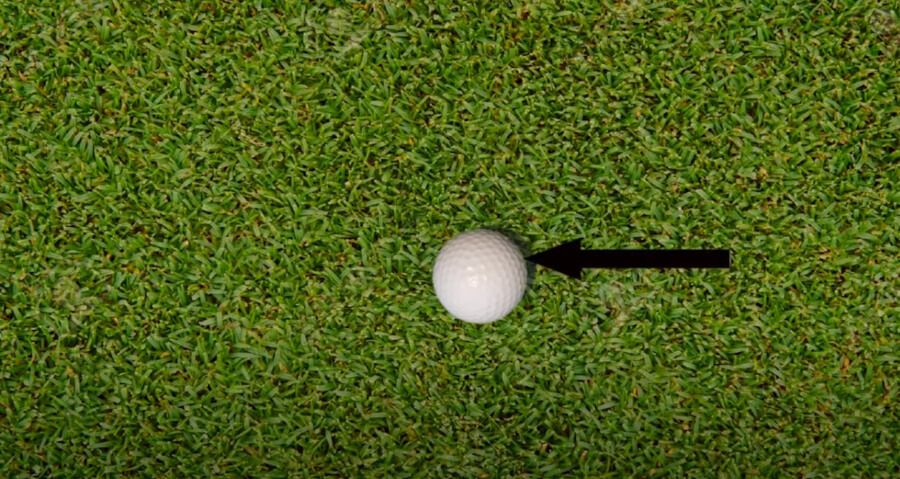
Clay Ballard suggests picturing an arrow behind the ball, pointing northwest—slightly left of your target line. This mental image trains your body to match the required swing path for a fade.
Combined with an open clubface, this setup produces the left-to-right shot shape you’re looking for.
Where to Focus Your Eyes for Bunker Shots?
Bunker shots require a different kind of focus. Since you’re not trying to strike the ball directly, your eyes should shift to a spot 1–2 inches behind the ball in the sand.
This small adjustment helps you commit to entering the sand before the ball, allowing the club to glide underneath and lift it out with enough loft and spin.
You’re not trying to pick the ball clean—your goal is to use the sand to carry the ball onto the green. By focusing your eyes behind the ball, you’re more likely to hit the sand first and control both distance and trajectory.
How does Eye Focus Impact My Golf Shots?
While eye focus alone won’t fix a poor swing, it can play a valuable role in helping you execute a better one.
You’ll still need to square the clubface at impact and swing on the correct path—but many amateur golfers find that picking a consistent visual target helps them stay committed to the shot and visualize the swing more clearly.
A well-chosen focus point gives your body a cue to work off. Whether that’s hitting slightly behind the ball in the bunker or swinging inside-out for a draw.
It’s not a magic fix, but it can sharpen your intent and help you stay in the moment during the swing.
Final Thoughts
Where to focus your eyes when hitting a golf ball boils down to your preferences.
The most crucial factor is clearly visualizing your shot to execute it as intended.
If you find focusing your eyes on a specific area helpful, follow the steps in our guide.
These angles enhance your ability to picture the desired club path for each swing to deliver a draw, fade, or straight flying shot.

